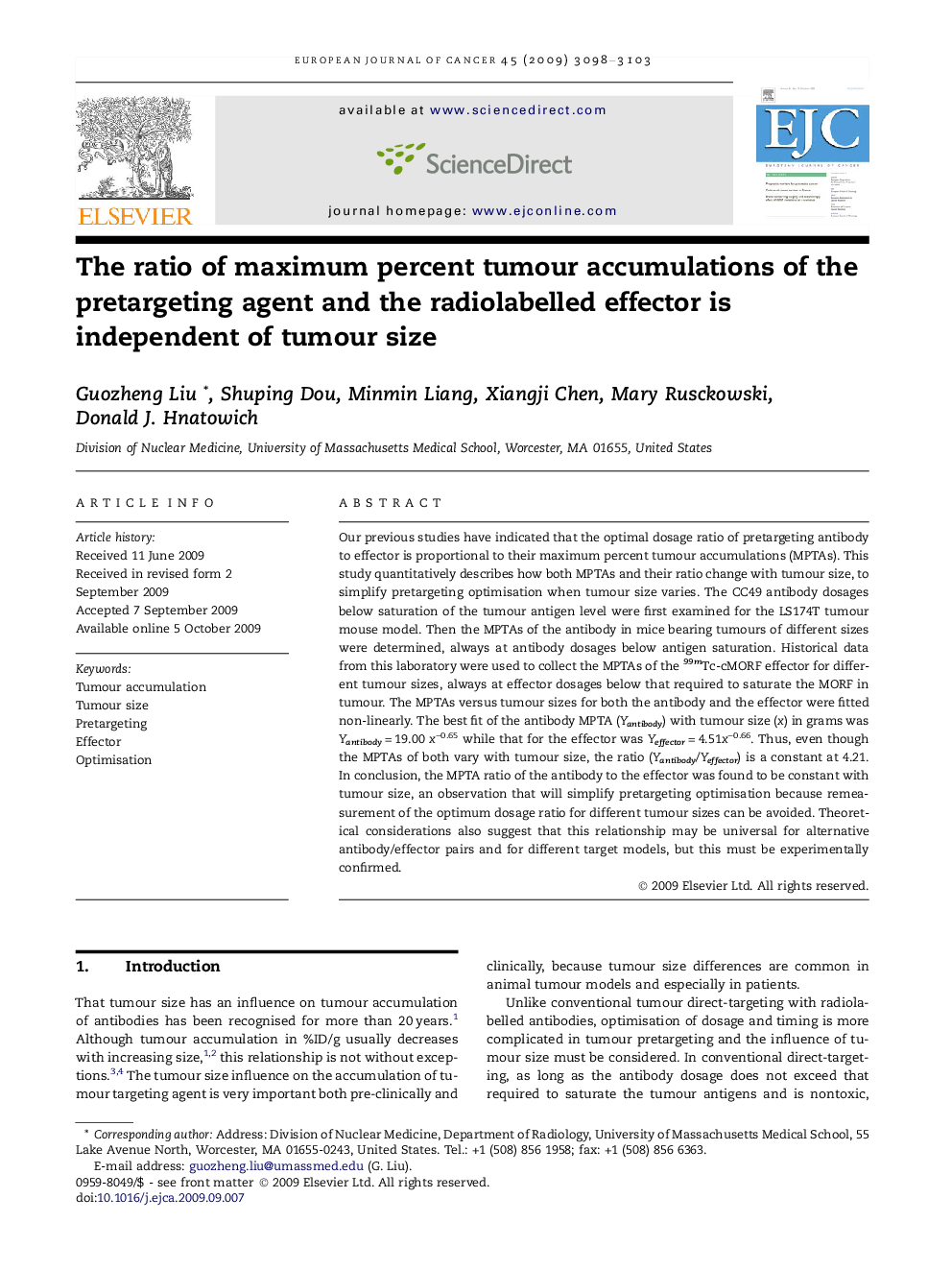| Article ID | Journal | Published Year | Pages | File Type |
|---|---|---|---|---|
| 2125210 | European Journal of Cancer | 2009 | 6 Pages |
Abstract
Our previous studies have indicated that the optimal dosage ratio of pretargeting antibody to effector is proportional to their maximum percent tumour accumulations (MPTAs). This study quantitatively describes how both MPTAs and their ratio change with tumour size, to simplify pretargeting optimisation when tumour size varies. The CC49 antibody dosages below saturation of the tumour antigen level were first examined for the LS174T tumour mouse model. Then the MPTAs of the antibody in mice bearing tumours of different sizes were determined, always at antibody dosages below antigen saturation. Historical data from this laboratory were used to collect the MPTAs of the 99mTc-cMORF effector for different tumour sizes, always at effector dosages below that required to saturate the MORF in tumour. The MPTAs versus tumour sizes for both the antibody and the effector were fitted non-linearly. The best fit of the antibody MPTA (Yantibody) with tumour size (x) in grams was Yantibody = 19.00 xâ0.65 while that for the effector was Yeffector = 4.51xâ0.66. Thus, even though the MPTAs of both vary with tumour size, the ratio (Yantibody/Yeffector) is a constant at 4.21. In conclusion, the MPTA ratio of the antibody to the effector was found to be constant with tumour size, an observation that will simplify pretargeting optimisation because remeasurement of the optimum dosage ratio for different tumour sizes can be avoided. Theoretical considerations also suggest that this relationship may be universal for alternative antibody/effector pairs and for different target models, but this must be experimentally confirmed.
Related Topics
Life Sciences
Biochemistry, Genetics and Molecular Biology
Cancer Research
Authors
Guozheng Liu, Shuping Dou, Minmin Liang, Xiangji Chen, Mary Rusckowski, Donald J. Hnatowich,
